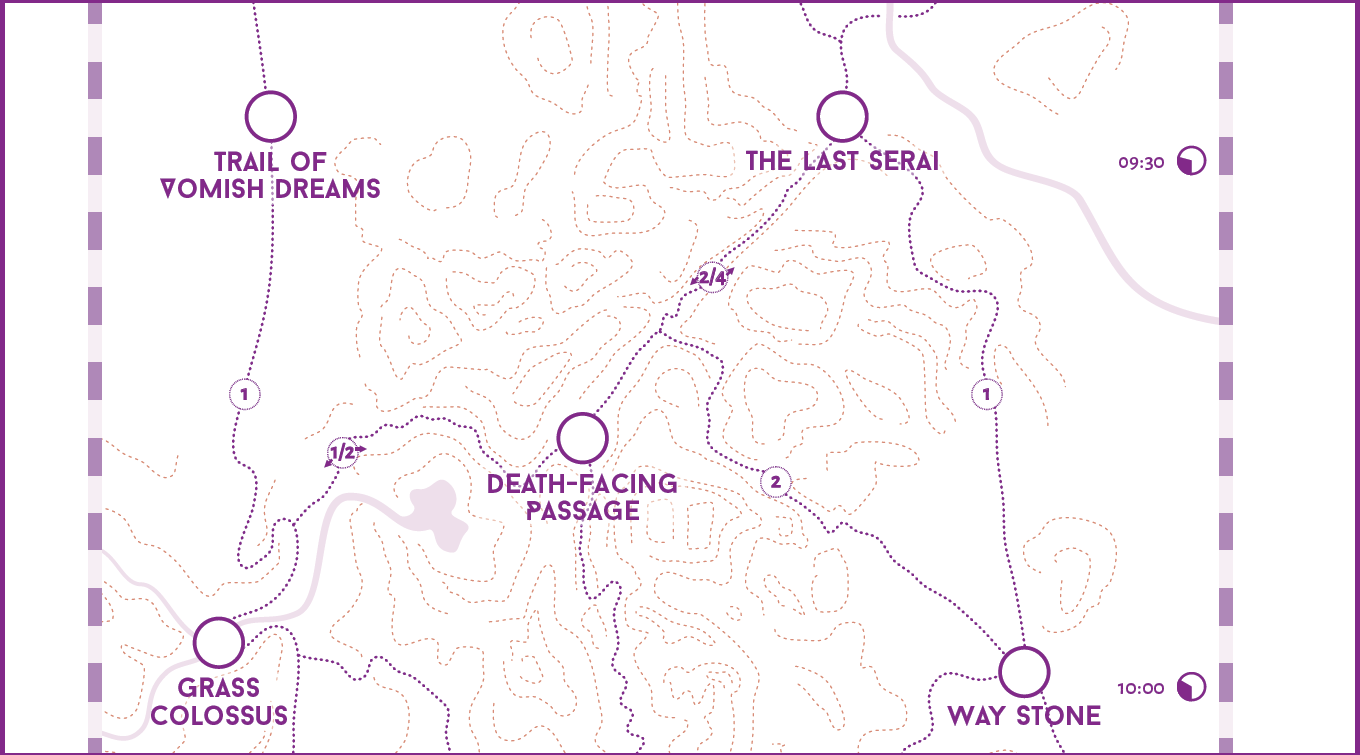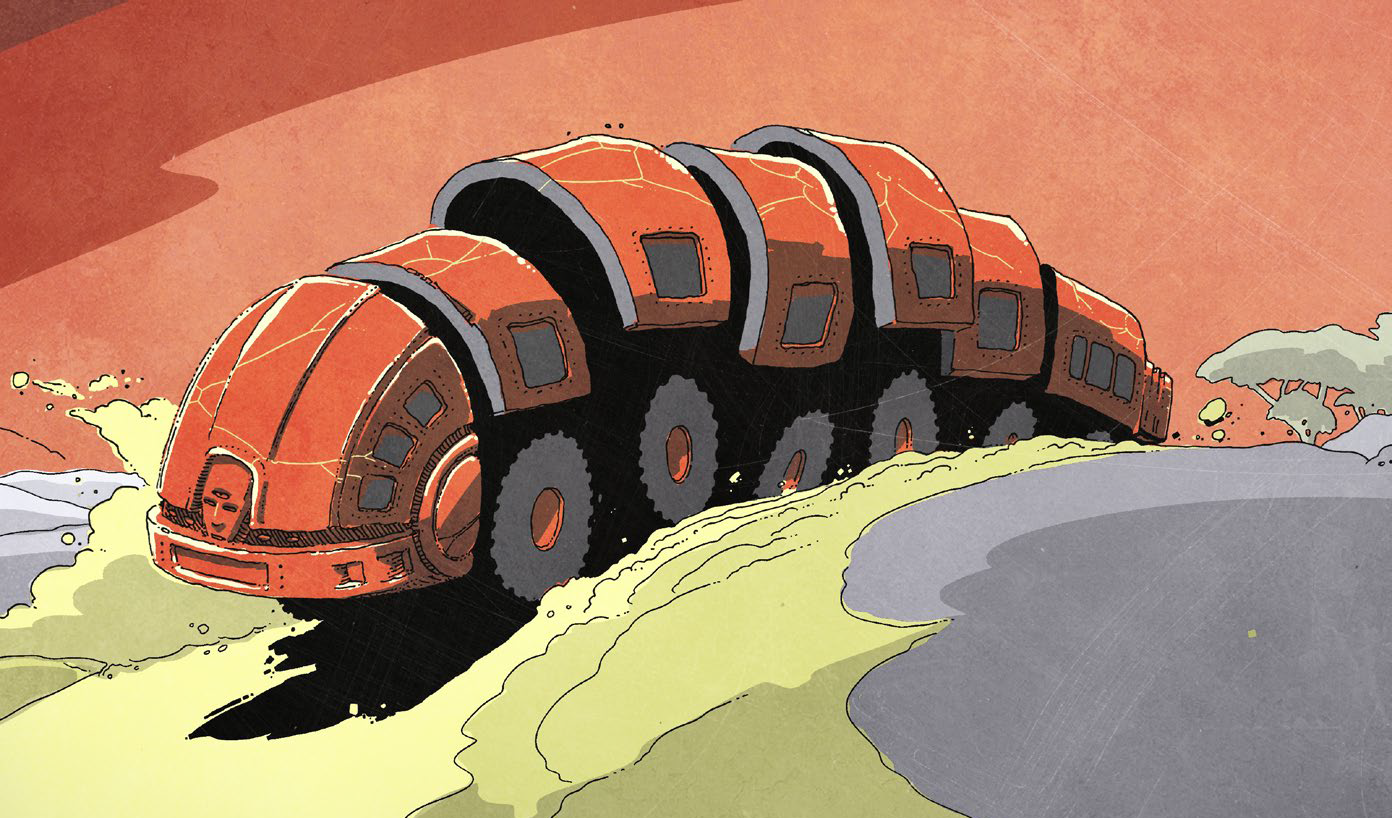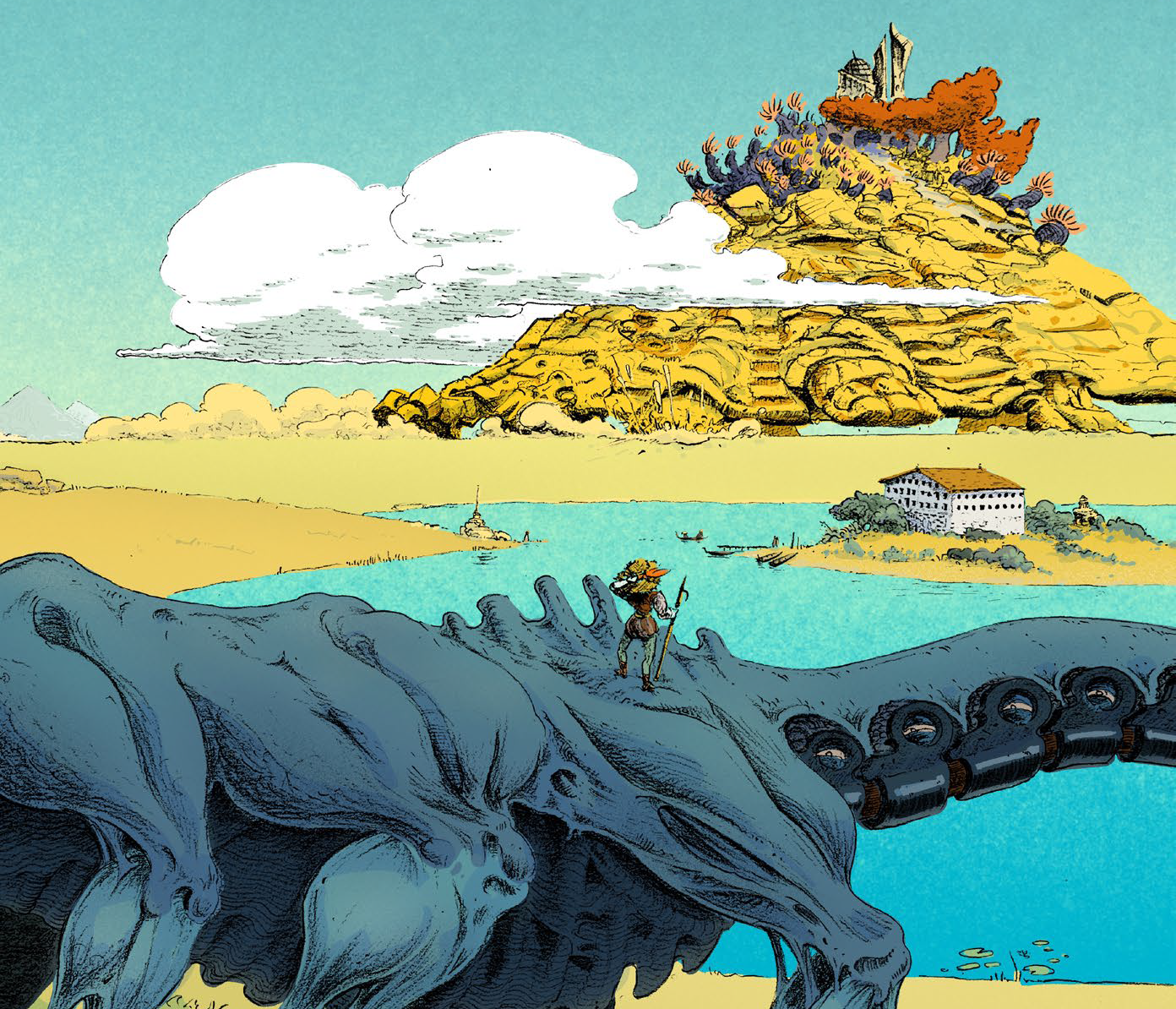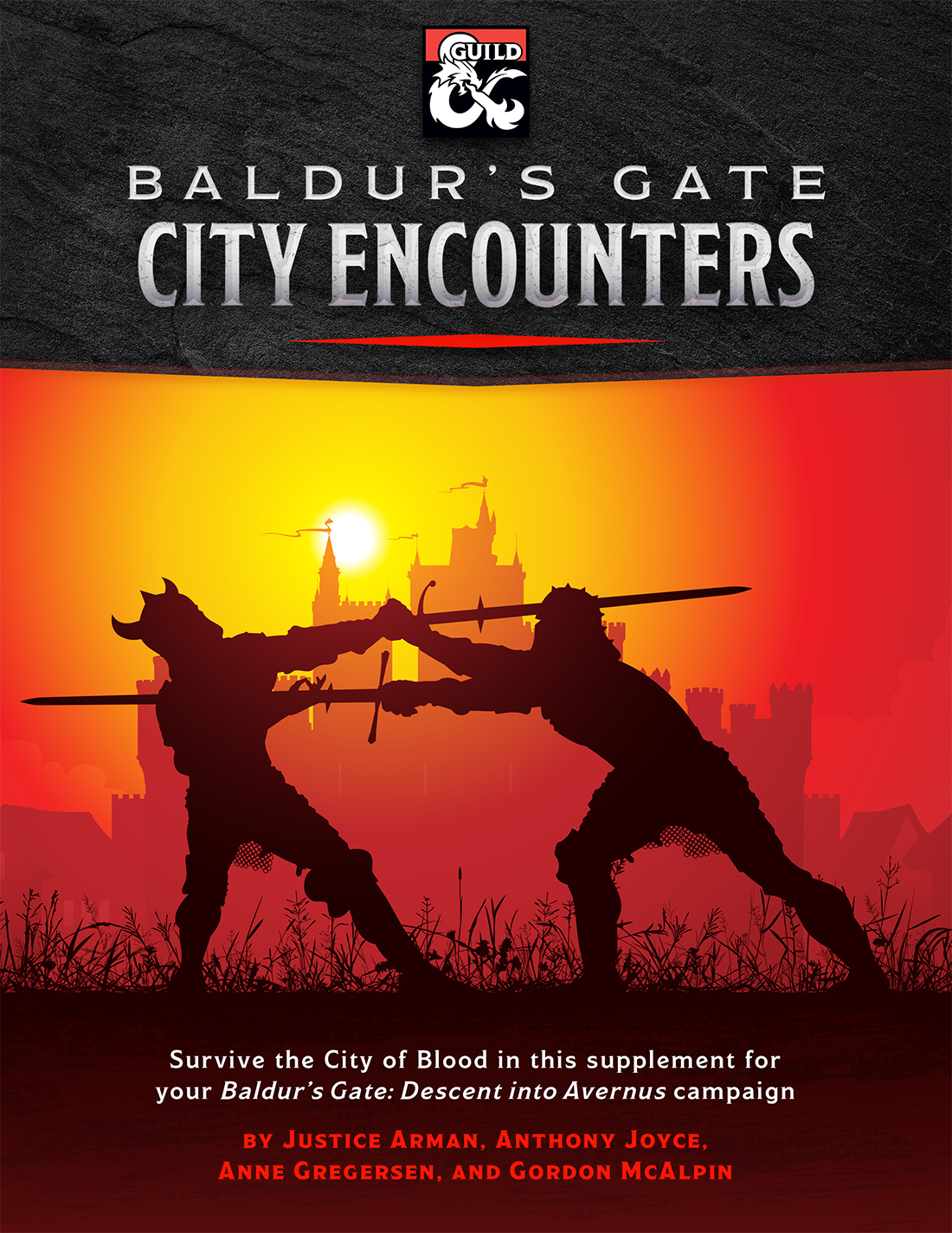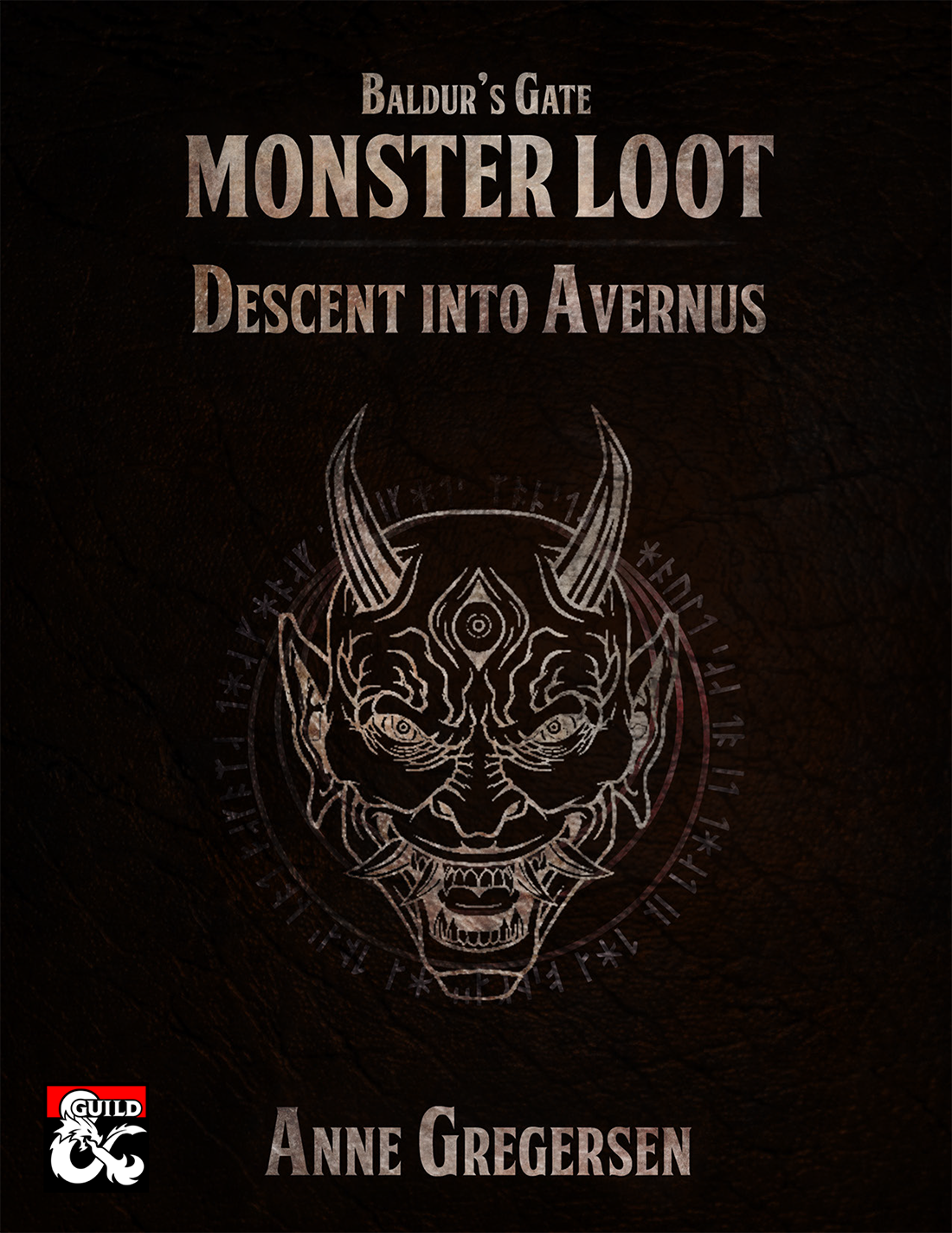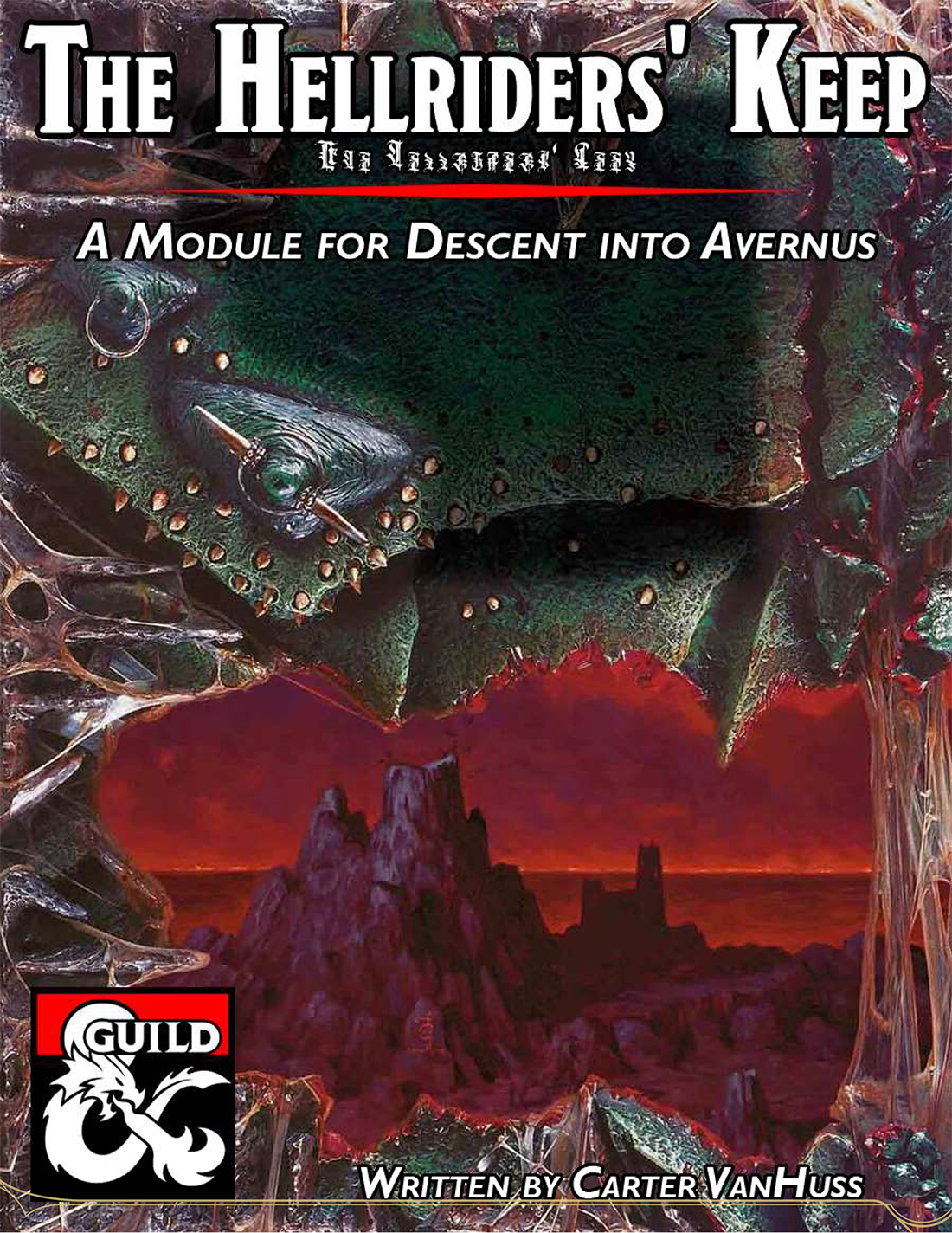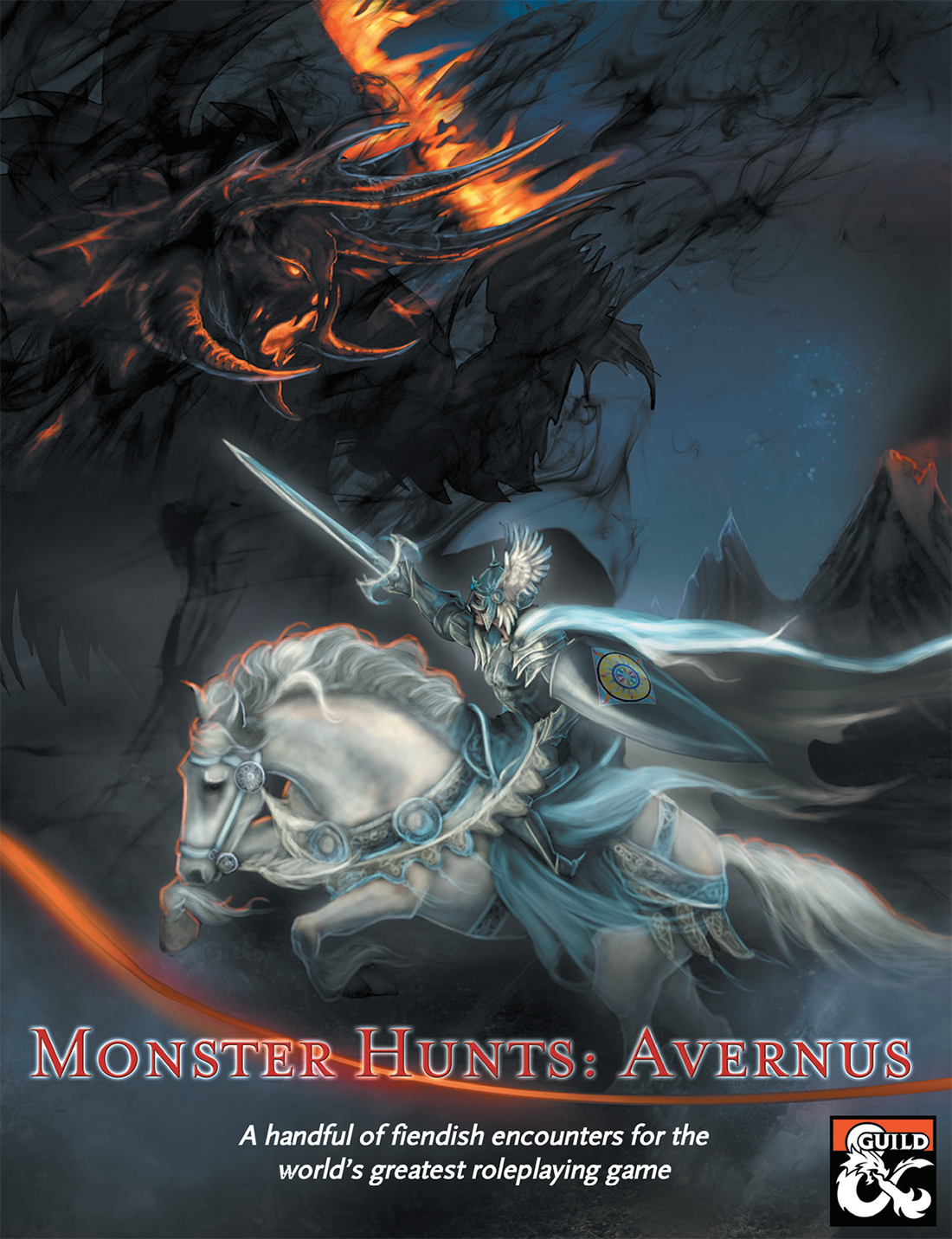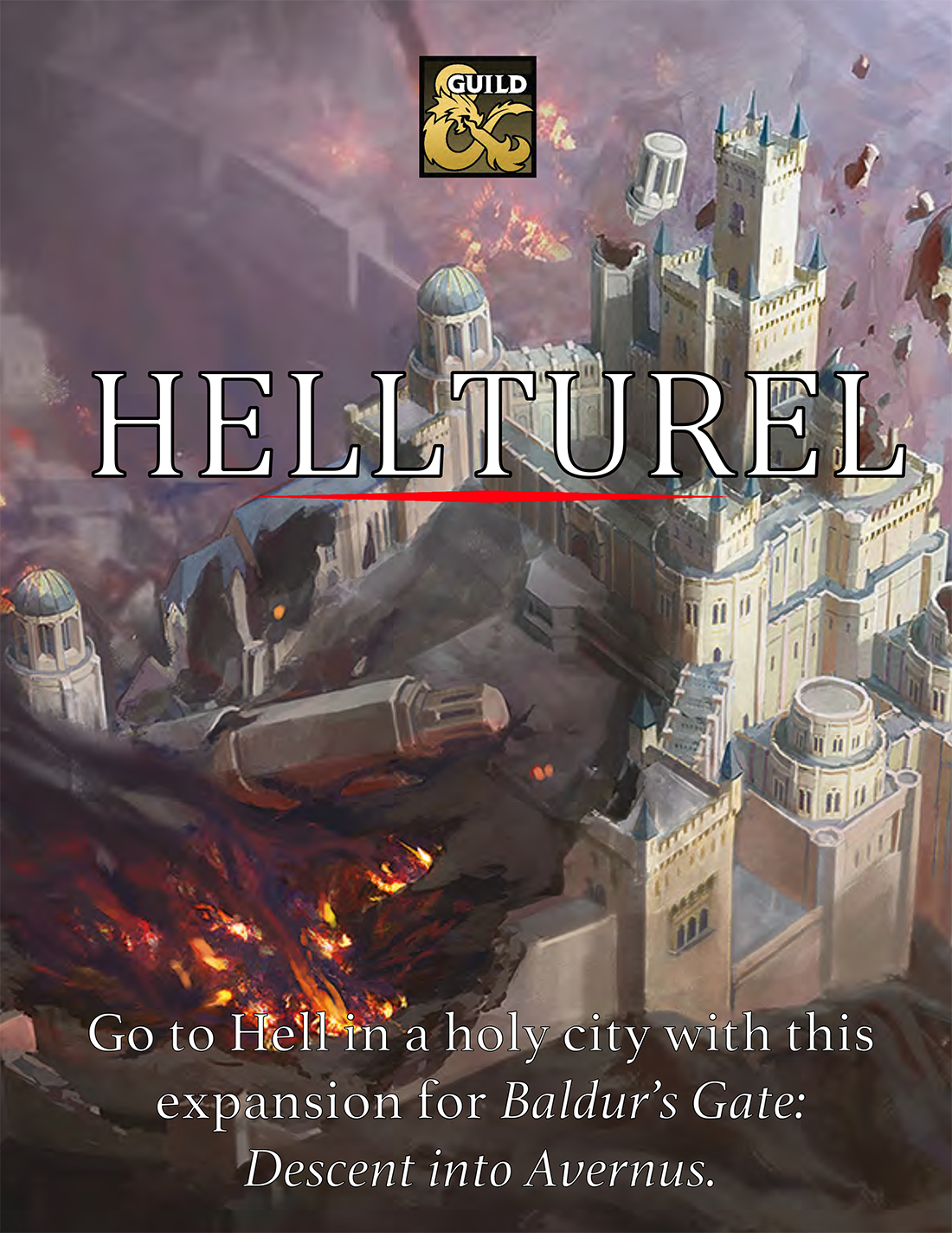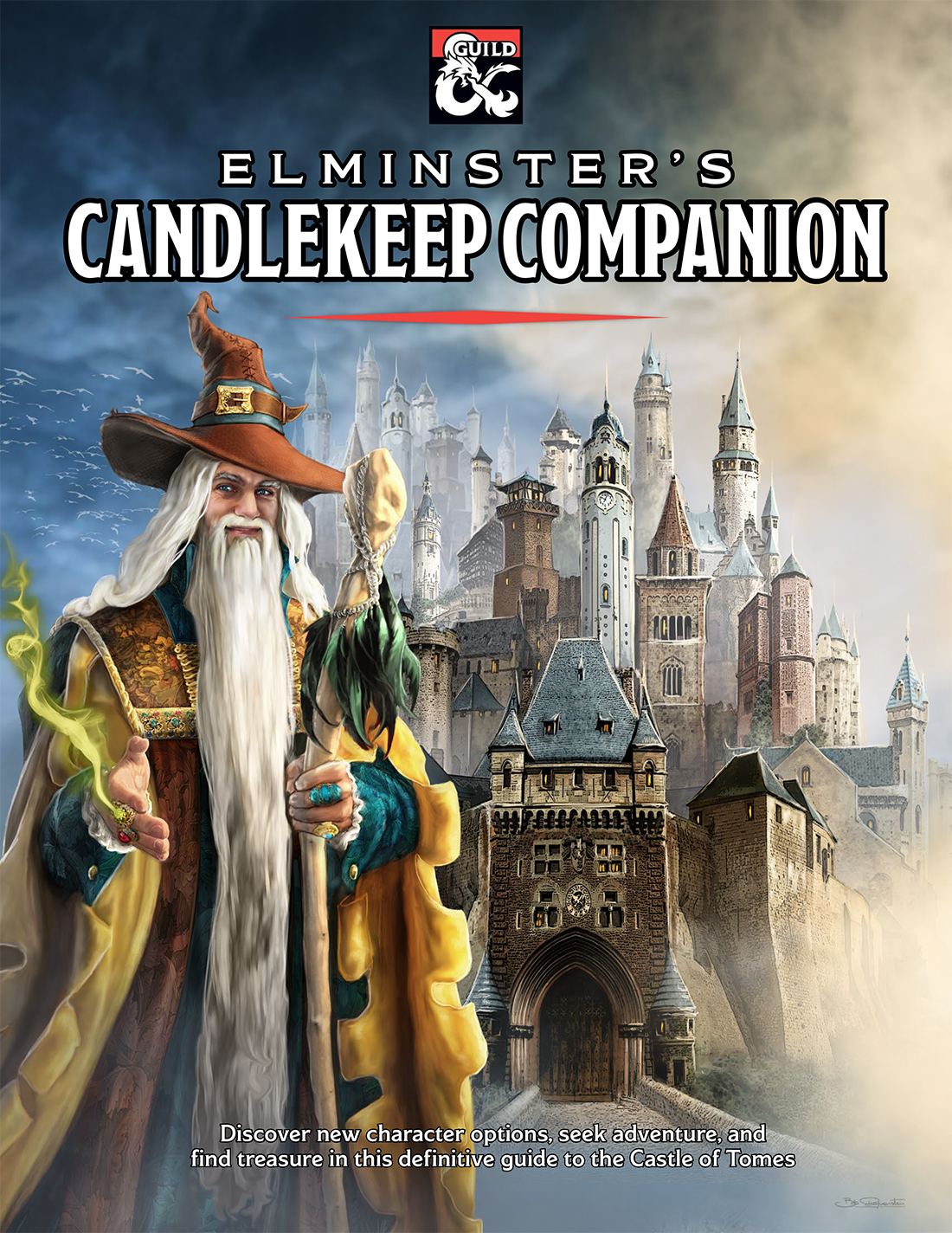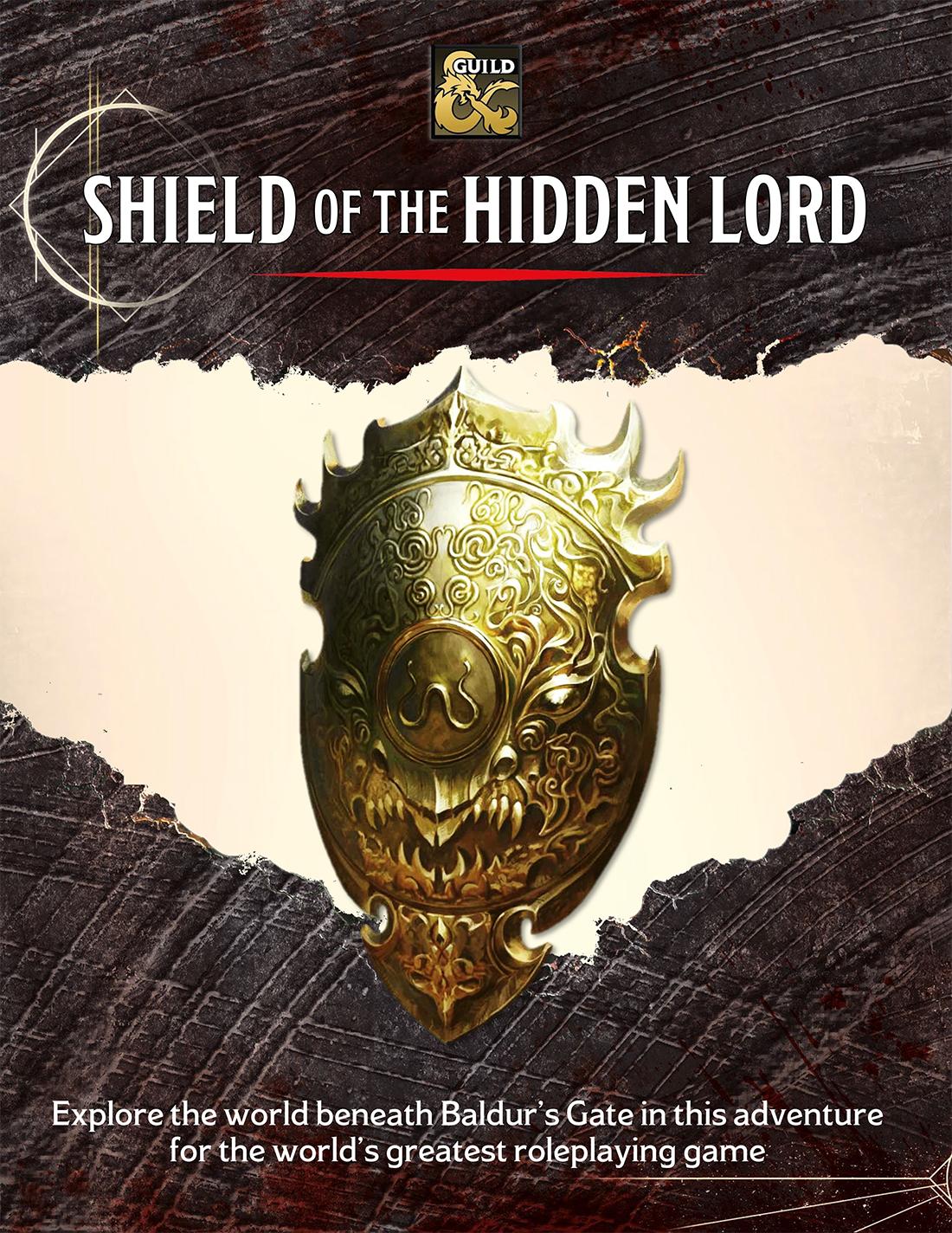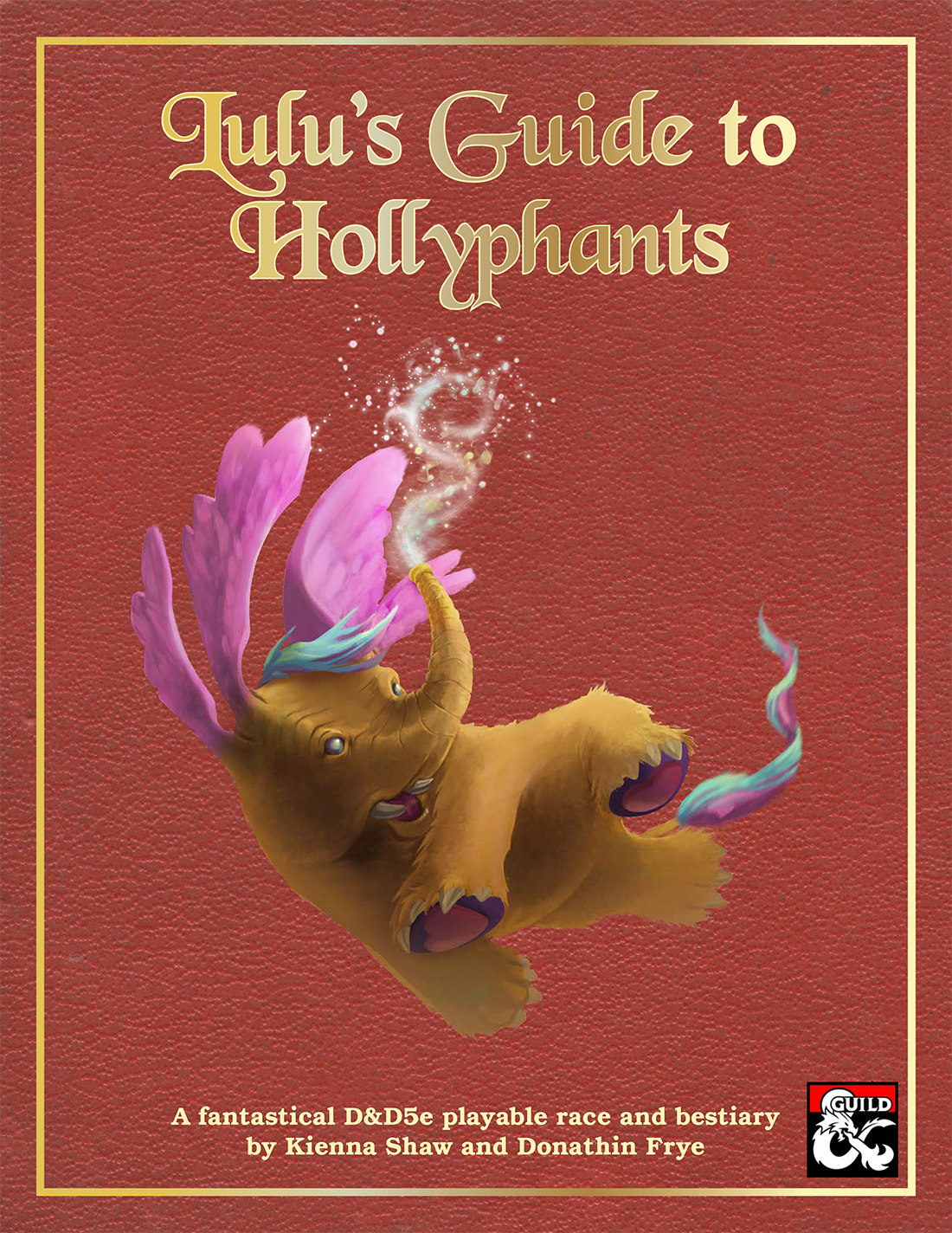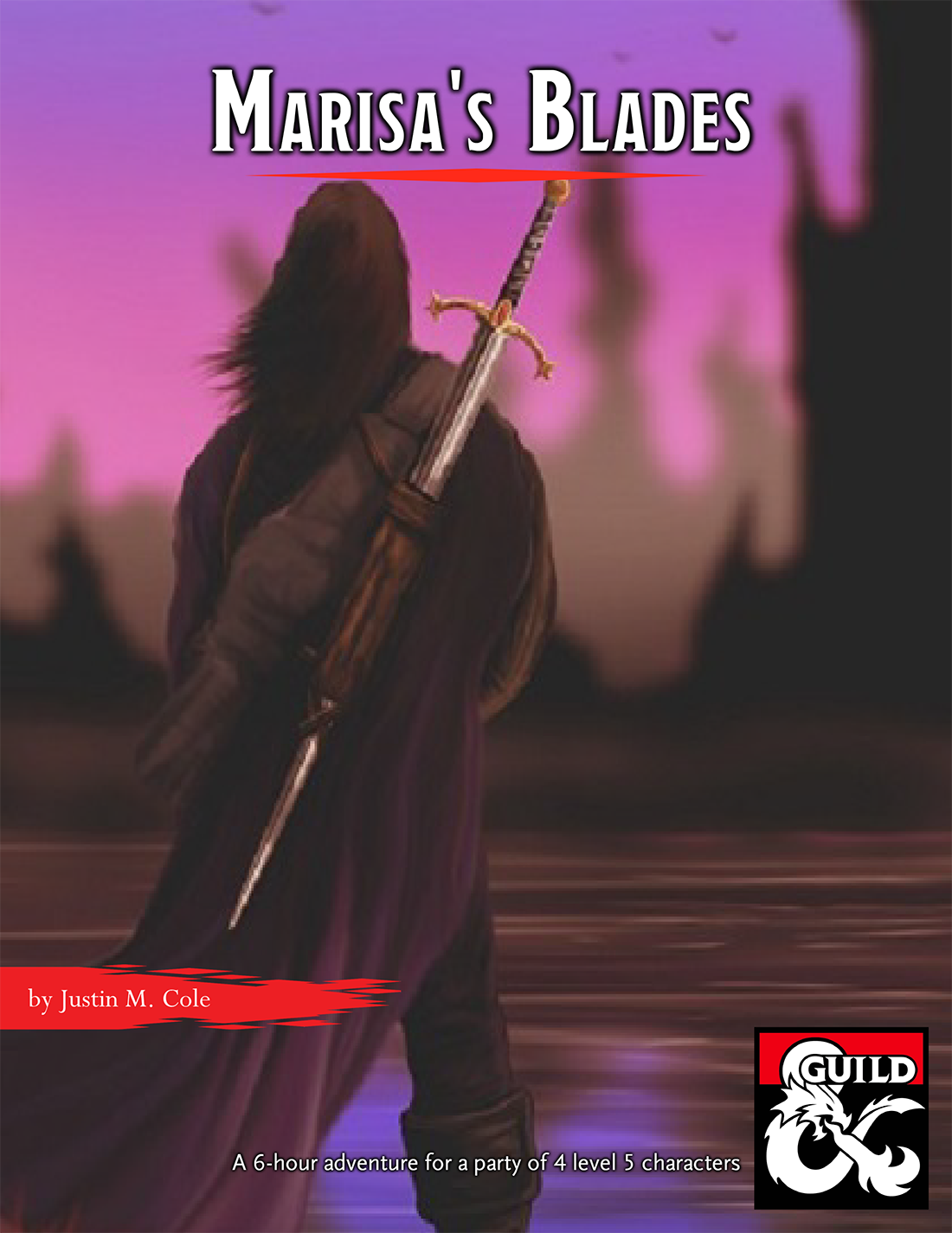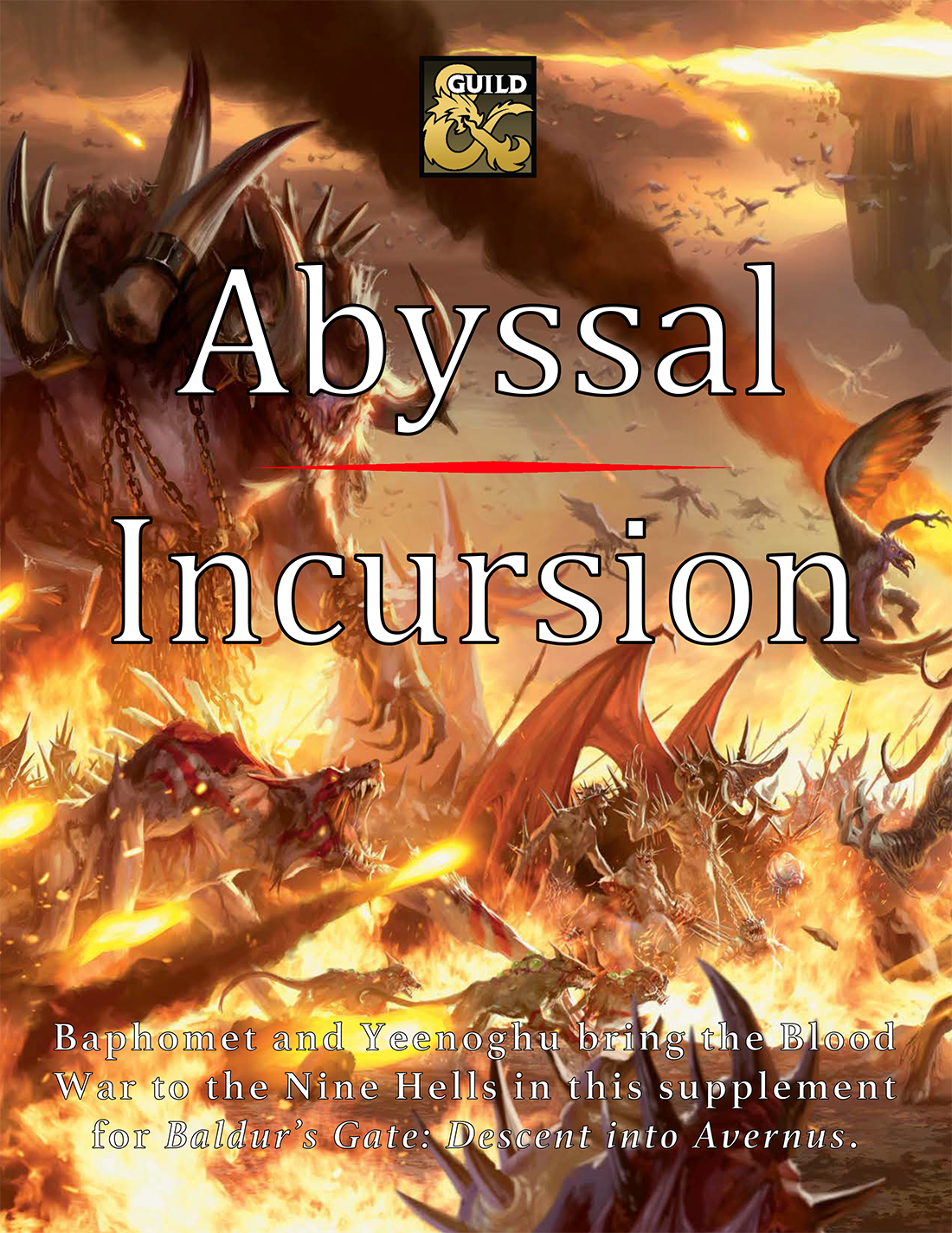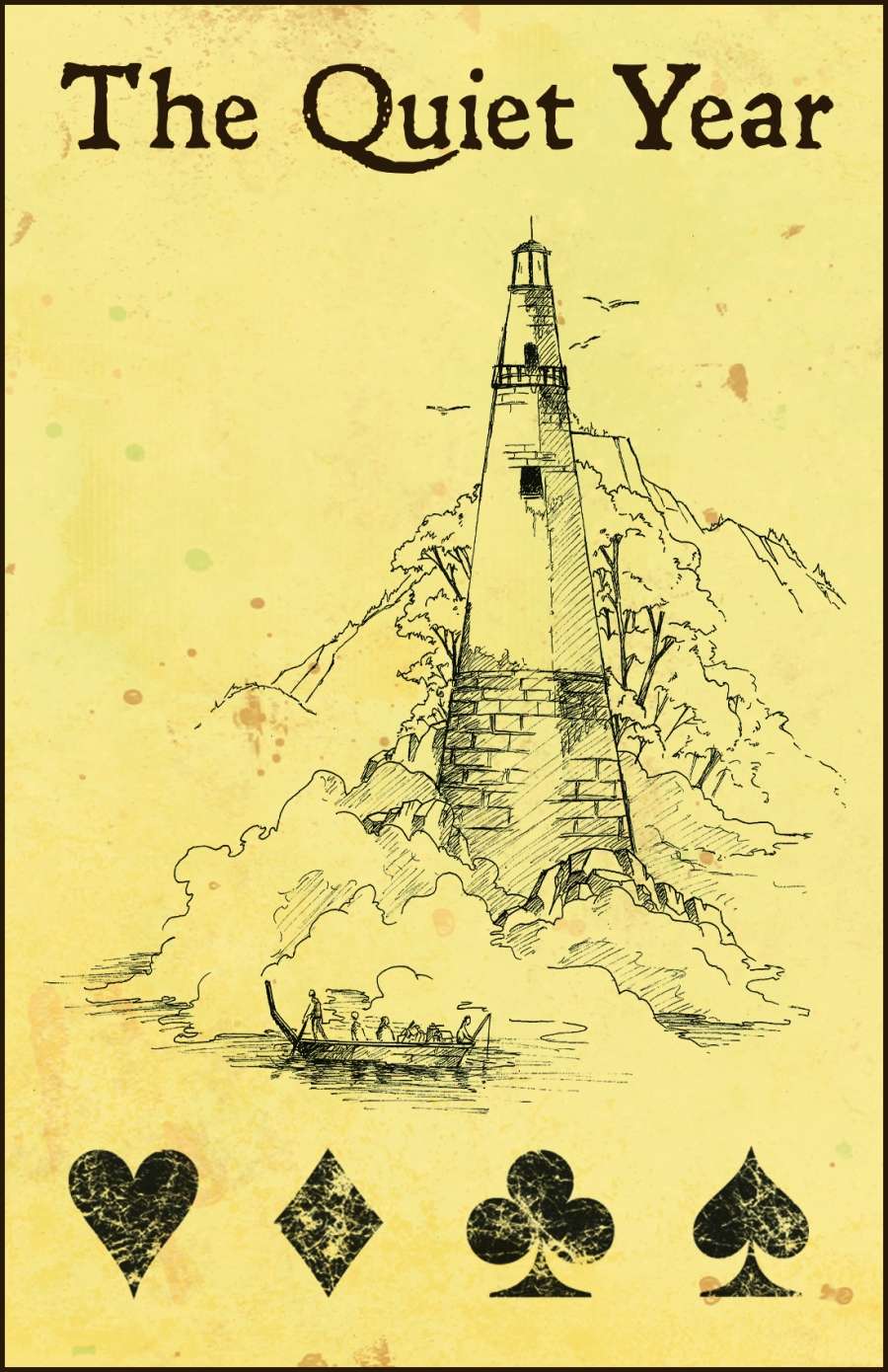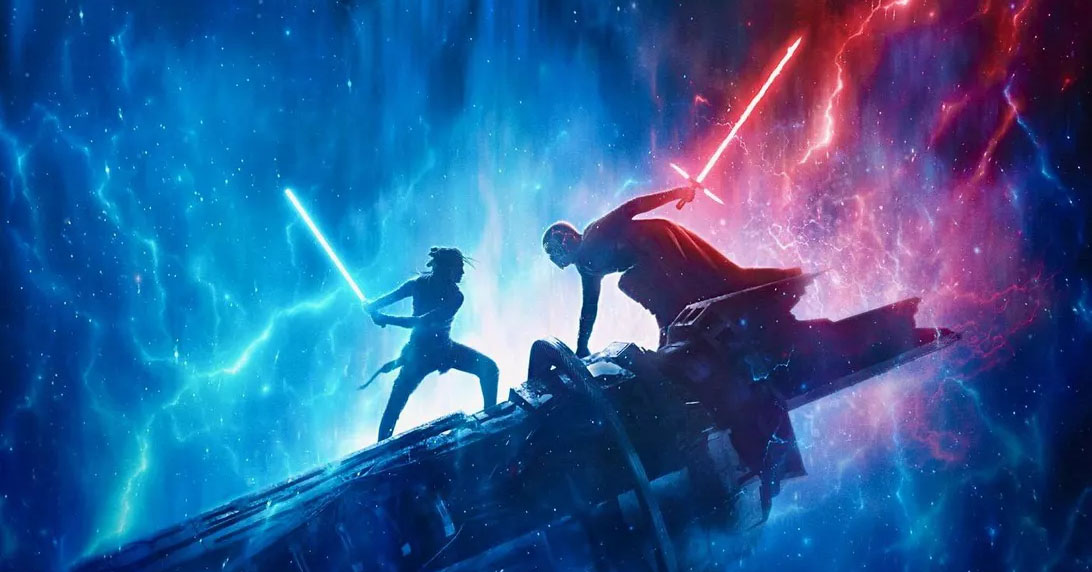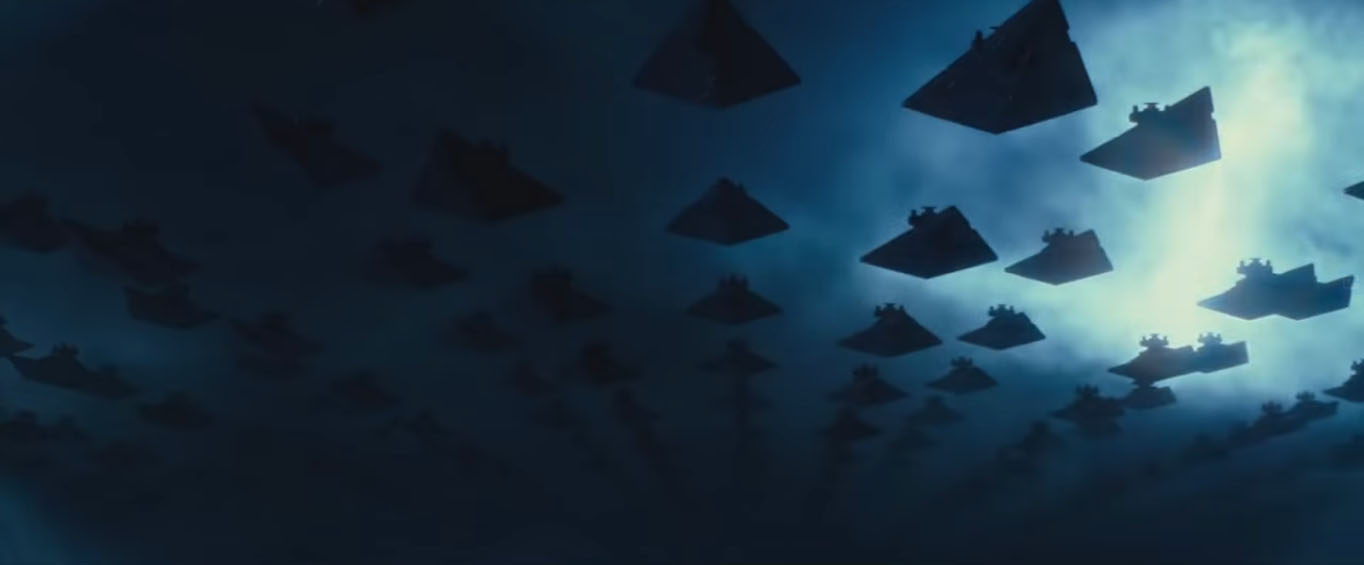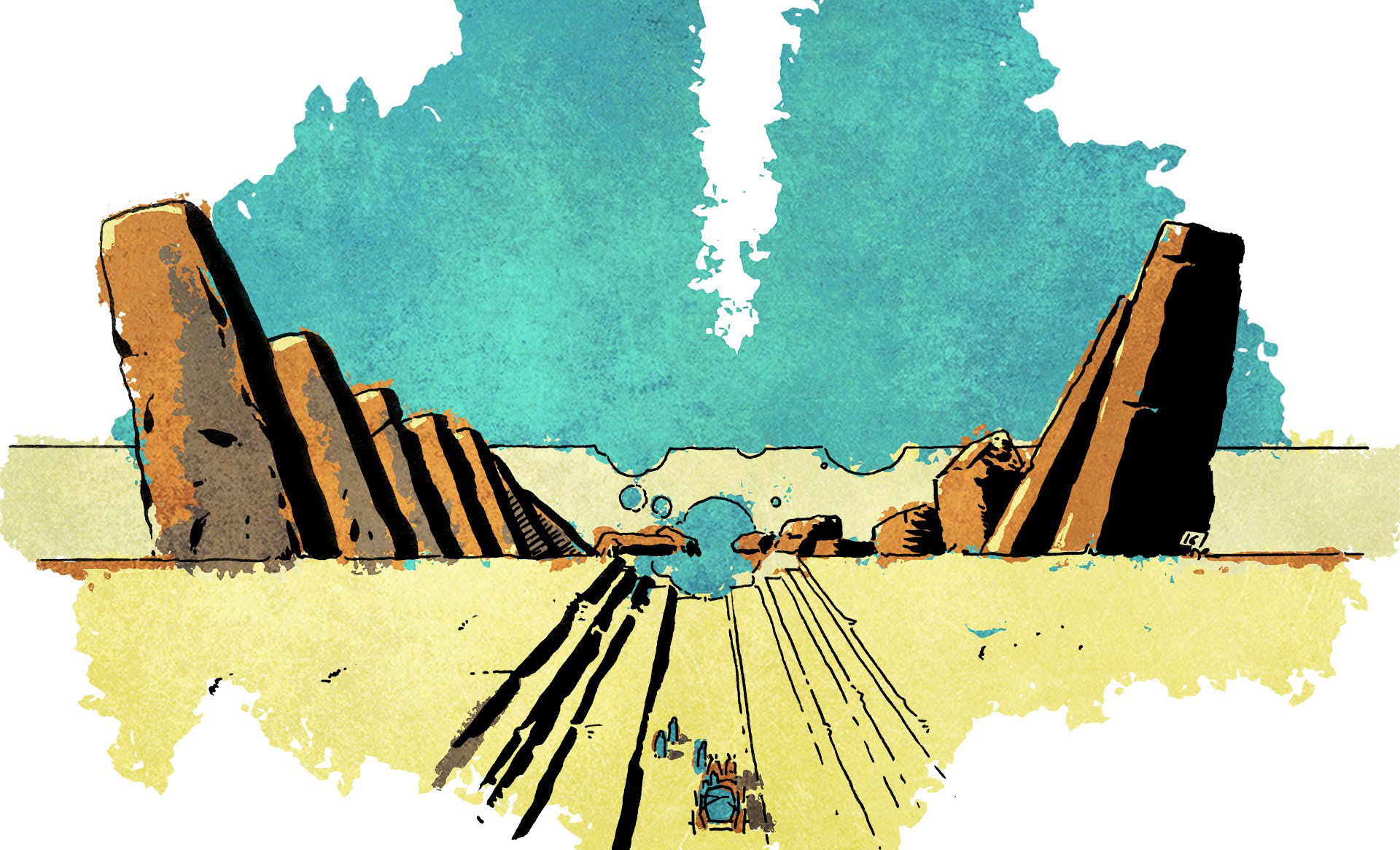
At the edge of the Rainbowlands stands the Violet City, the last bastion of civilization upon the edge of the ultraviolet grasslands. Even the civilized lands of this world are strange and alien to our eyes — teeming with a multihued humanity (of greenlanders, bluelanders, etc.), porcelain princes (who simultaneously live in multiple bodies psychically linked), body-hopping ultras, and cat lords — and here, where it comes to an end, the setting teems with a fever dream of the fantastic.
The premise of Luka Rejec’s Ultraviolet Grasslands is that the PCs will form a caravan which journeys out into these strange lands and then returns.
The group will start by selecting their reason for journeying into the grasslands. In addition to obviously motivating the expedition, this also determines how the group earns XP. Twelve default options are provided. For example:
- To make money. Provide the party with a financier that loans them the money for their first caravan (and creates a debt), then consider awarding 1d6 x 100 XP for every new profitable trade route discovered, and for every profitable trade completed.
- To learn the ancient secrets. A reason that should appeal to wizards. Give each destination a 20% chance of having lore and remains that lead to the discovery of an ancient secret. Once five pieces are recovered, a wizard can spend a week to research the lore and figure out the Teleportation of Innocents or perhaps the secret of Liquid Stone Lamps. Consider awarding 1d6 x 200 XP for every such secret learned.
The grasslands themselves are not trackless wastes. There are established routes and the players will have a map of 32 branching locations leading from the edge of the grasslands to the strange ruins of the Black City on the edge of an oily sea. Here’s one slice of what this map looks like:
The destinations indicated on the map are vast distances apart (the numbers on the trails between them indicate weeks of travel to reach them). You can think of each destination as a distinct point of light; or as the hub of a wheel, with different discoveries (i.e., adventure locations) available as spokes off of them. A simple structure is given for the PCs to make discoveries from the destination they’re currently in, and the intention is that they will add these discoveries to the map. (You can imagine it slowly expanding in detail as the campaign continues.)
Caravan travel itself is given an elegant, streamlined system consisting of:
- Time (simplified to weeks of travel, with each week given a specific resolution sequence you can easily walk through while making meaningful decisions)
- Inventory (with a simple system of “sacks” that make it easy to manage a caravan without getting bogged down in bookkeeping)
- Supplies & Survival (again, simplified to make it easy to manage an entire caravan of hirelings and pack animals)
The beauty of this is its robust simplicity. What I’m going to call Rejec’s caravan-crawl deserves to be ensconced alongside dungeoncrawls and hexcrawls as a pillar of the RPG artform. It’s an elegant and compelling scenario structure: Rejec provides a clean framework which GMs can fill with content, coupled to a clean set of default actions linked directly to a plethora of potential default goals.
The key insight, in my opinion, is the expectation that the PCs will travel these caravan routes again and again and again. If the goal of the structure was to simply travel from one end of the caravan route to the other (e.g., from the Violet City to the Black City), then you’d be looking at Choose Your Own Adventure prep, and it would be difficult to justify prepping all this branching content when most of it would never be experienced. But because the PCs will constantly be engaging and re-engaging the Ultraviolet Grasslands, all of that material become relevant.
In theory, this is obvious: Both megadungeons and hexcrawls follow similar principles, justifying expansive prep with the expectation that the material will be constantly re-engaged. In practice, though, this is non-trivial to achieve. Although you could simply mandate that the PCs mount multiple expeditions, this can easily decay into a monotonous grind. (You can see a similar problem crop up when people try to run megadungeons as if they were traditional dungeons and expect the PCs to “clear the dungeon.”)
Rejec structures and incentivizes re-engagement with the grasslands in three ways:
First, the Supply & Survival system forces the PCs to return to civilization to resupply (or to explore the trade routes in order to find places where they can re-supply along the way). Even if their ultimate goal were to simply “reach the Black City,” they would still need to repeatedly engage the grasslands in order to achieve that goal.
Second, by making each point on the branching routes an exploration hub surrounded by a cluster of discoveries (which could be theoretically expanded infinitely), Rejec ensures that the PCs don’t exhaust the routes. Like (Re-)Running the Megadungeon, re-engaging the material is always fresh and interesting; not simply a rote repetition.
Third, as a final fillip, Rejec adds a simple Trade & Goods structure. Using this structure, GMs can procedurally generate demand & supply, while the PCs can use market research to figure out the best places to sell their stuff. I have a few minor quibbles about this system (see below), but it creates a systemic pull that encourages players to explore the totality of the trade network.
Then, on top of that, Rejec provides a system for Milk Runs! “If the heroes figure out a milk run, where they can just travel the same journey over and over for profit… let them, but this is boring. Abstract this into a route a henchperson can handle, and roll for cash and complications every year.” So if the system designed to encourage the PCs to explore ever produces an error state where it starts encouraging them to do stuff that’s boring, Rejec provides a solution! This is brilliant!
Oh! Also! Starter caravans! Rejec provides a selection of pre-built caravans custom-tailored for specific purposes (scout, small trader, dungeon exploration expedition, etc.), so that you can just pick one and immediately start playing.
GLORIOUS GRASSLANDS
Laying aside how excited the book makes you to put a caravan together, the setting itself is absolutely enchanting. The book draws you in and conjures the grasslands before your mind’s eye in an alluring, all-captivating vision. It’s not just the art — which is gorgeous; landscapes like a young Hal Foster on an acid trip with characters designed by P. Craig Russell. The text positively vibrates from all of the rich ideas and evocative imagery Rejec has crammed between the covers. By the time I finished reading, I wanted to be out there exploring immediately.
Honestly, just a sample of the place names should be enough to stir the imagination:
- The Bone Mines of Moy Sollo
- The Death-Facing Passage
- The Cauldron of Revitalized Divinity
- The Grass Colossus
- The Porcelain Citadel
- The Cliff Villages of Ghost and Clan
There is a distinctive attitude and vision which simply leaps off the page. Groping for antecedents to compare the grasslands to, I suggest that this might be what you’d end up with if Hayao Miyazaki adapted Gene Wolfe’s Book of the New Sun: It embodies a seemingly impossible nostalgia for something so alien it shouldn’t be able to resonate with our own sense of a lost past… and yet somehow does, capturing a serene beauty which is nevertheless filled with pulse-pounding savagery.
What impresses me most, though, is how incredibly accessible it all feels. The RPG industry is filled with any number of incredibly ornate and wonderful settings that are incredibly difficult to bring to the table because of how much effort it takes to onboard the entire group (Tékumel being the granddaddy of them all). But despite how fresh and unique and deep the Ultraviolet Grasslands are, I nevertheless feel that I could sit down and start playing this with little more effort than any other game of D&D.
Maybe there’s something alchemical about the borderlands — about the place where civilization (any civilization) falls away — that frees us to explore this strange and wonderful wonderland with eager and open eyes. Or perhaps it’s because Rejec encapsulates so much of the setting into immediately utilitarian elements (like equipment lists) that the players will engage with in play while making the discovery of the rest of the setting de rigeur the object of play itself.
But whatever the case, what Ultraviolet Grasslands overwhelmingly instills in me is a sense of not only how gameable it is, but how much I want to game it right now.
WHERE TO BEGIN?
There are a couple ways to begin exploring the Ultraviolet Grasslands. First, there is Ultraviolet Grasslands: Introduction, which is a free 80-page PDF. 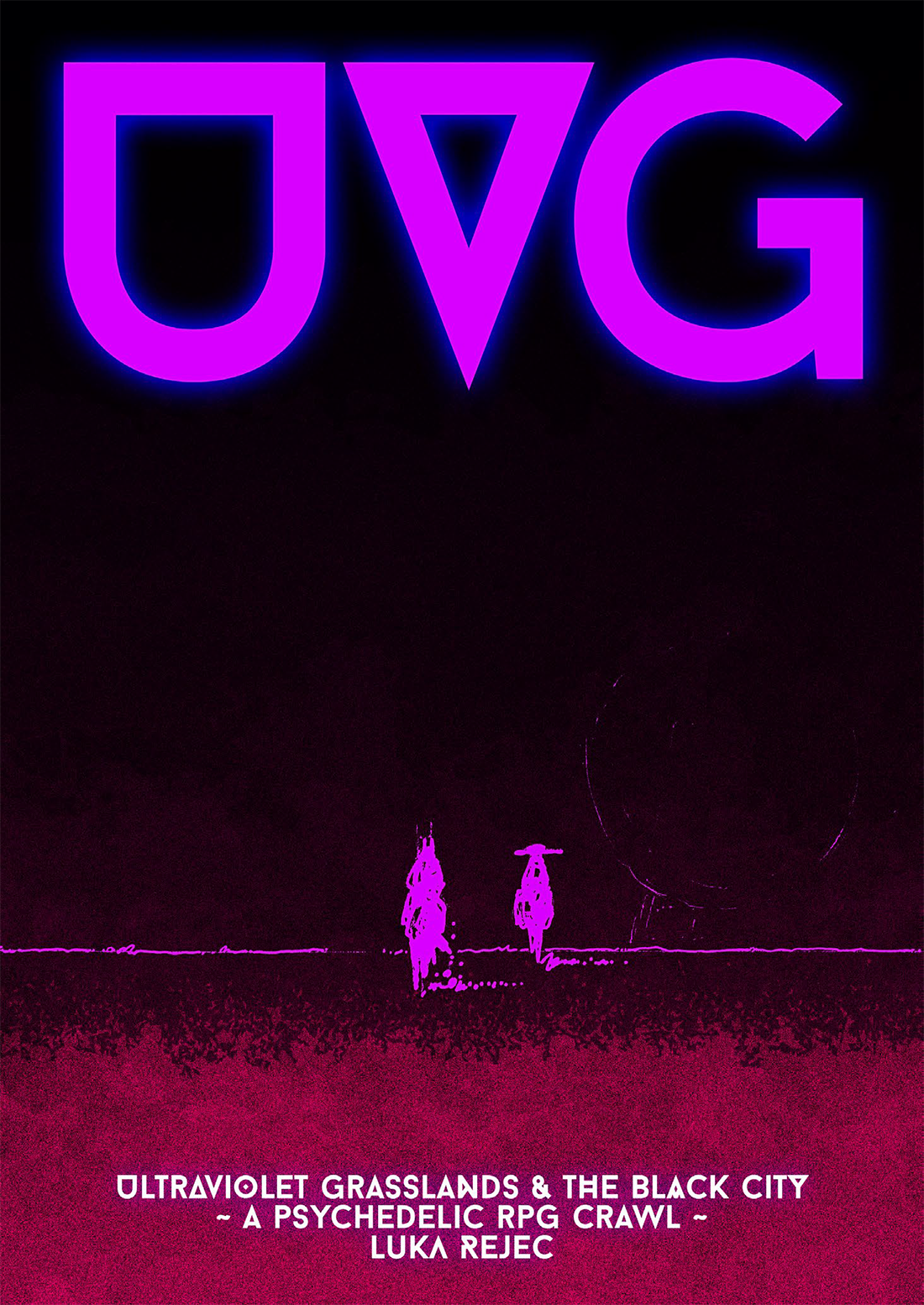 Second, there is the full-fledged Ultraviolet Grasslands and the Black City which is the full enchilada.
Second, there is the full-fledged Ultraviolet Grasslands and the Black City which is the full enchilada.
Theoretically, if you buy the full book, you should have no need for the Introduction. But I am going to STRONGLY RECOMMEND that even if you rush out and buy a copy of the Ultraviolet Grasslands and the Black City immediately upon finishing this review (and you should), that you should still start by reading the 80-page Introduction.
Why? Well… Remember that beautiful, crystal clear structure I was raving about? In the full book it gets a little… muddled.
First, the full book has opted to move all the location descriptions to the front of the book “for easier reference during campaign play.” Which makes sense from a certain point of view. But without the context of the structure for which this material was designed, it’s somewhat dizzying in its presentation.
 Second, even once you get to the mechanical portion of the book, the material has lost focus on the core structure. In Whither the Dungeon? I talked about how D&D originally included a clear structure for running dungeon adventures, passed through a middle period where the rulebooks still included all the rules without the clear structure, and then eventually arrived at 5E where knowledge of the structure had so atrophied and/or become engrained in the designers that they even forgot to teach DMs how to key a map. It’s interesting watching UVG more or less jump from Stage 1 to Stage 2 of that process for caravan-crawls in roughly 18 months.
Second, even once you get to the mechanical portion of the book, the material has lost focus on the core structure. In Whither the Dungeon? I talked about how D&D originally included a clear structure for running dungeon adventures, passed through a middle period where the rulebooks still included all the rules without the clear structure, and then eventually arrived at 5E where knowledge of the structure had so atrophied and/or become engrained in the designers that they even forgot to teach DMs how to key a map. It’s interesting watching UVG more or less jump from Stage 1 to Stage 2 of that process for caravan-crawls in roughly 18 months.
If you’re already familiar with the caravan-crawl structure (which you can easily be by reading the Introduction), then it’s easy to see where all of the mechanical gewgaws in the full book — including a lot of new mechanical options — fit into that structure. But if you aren’t, then the full book notably lacks that guidance.
Here’s one small example: Remember the Starter Caravans I mentioned above? In the full book they’re relabeled “Sample Caravans” and the explanation of their purpose (“if you want to skip planning and optimization”) is no longer found in the text. This may seem like a small and perhaps even insignificant change, but in practice I think it’s actually very significant. And even moreso when we’re talking about larger, more pervasive, and more innovative structures.
Similarly, there are a few places where I think the simpler systems of the Introduction are to be preferred. The system for market research is a notable example that I mentioned above: In both versions of the system, it’s problematic that the character’s skill check determines the demand for a trade good in a location (rather than discovering that demand). But the system in the full book really doubles down on this, completely eliminating the aspect of the system where players investigate specific markets. (Instead, they just make a check and get results like, “They need it, but three stops away a place pays x4.”) Systemically this both flattens the results and is significantly less useful to me as a GM.
The full book also includes the SEACAT system, an OSR fantasy system with a fair degree of deviation from D&D. It seems fine, but mostly leaves me cold, so that the best thing I can say about it is that it only takes up about twenty pages of the book. Your mileage may vary, however, and, in any case, it is easily ignored: Ultraviolet Grasslands is easy enough to use with any OSR game, and not particularly moreso with 5E. (With 3E you’d probably need to adjust some of the skill check DCs.)
My last quibble will be that the discoveries are under-developed, being more adventure seeds for the GM to develop than full-fledged content that’s ready to be run at the table. (But considerably less so than most hexcrawl products you may be familiar with, so take my critique with a grain of salt.)
Is any of this to say that you shouldn’t run out and buy Ultraviolet Grasslands the Black City?
Good lord, no! You absolutely should!
Take your first step with the Introduction, but then you need to LEAP into the full book, chock full of Rejec’s beautiful art and the incredible setting guide that will unlock all the glories of the grasslands.
Style: 5
Substance: 5
Author: Luka Rejec
Publisher: WizardThiefFighter Studios & Exalted Funeral Press
Cost – UVG Introduction: Free (PDF)
Cost – UVG & the Black City: $40 or $25 (PDF)
Page Count: 80 (Intro) / 200 (Black City)
UPDATE: As I was writing this review, word came out that Ultraviolet Grasslands and the Black City has been nominated for two 2020 ENnies Awards!

